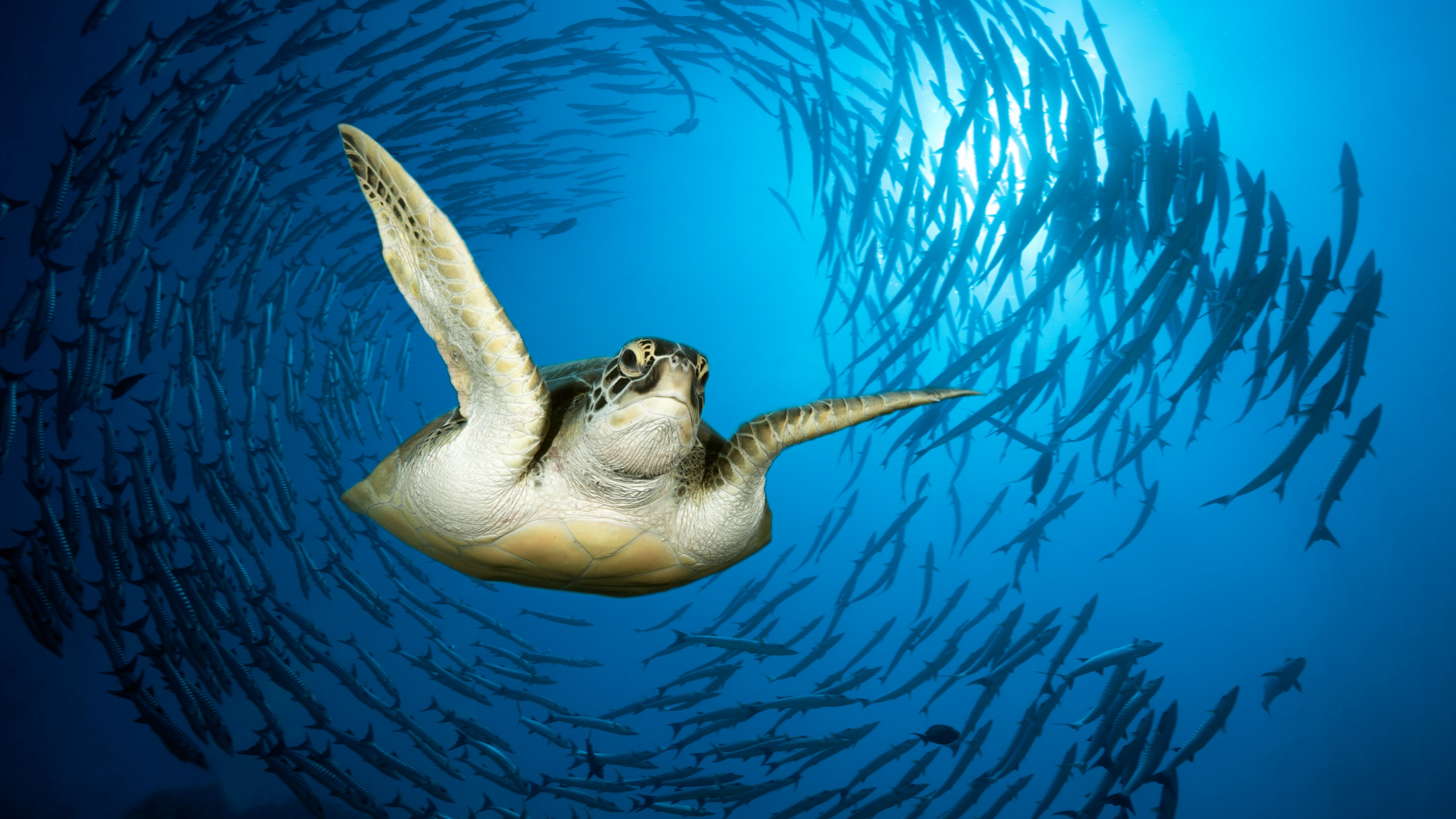Sea creatures' strange circular swimming has scientists puzzled
The behavior — which has been seen in sharks, turtles, seals and penguins — has yet to be explained.

Marine animals are swimming in circles, and the scientists who discovered the strange behavior don't know why.
Researchers have now observed green sea turtles, tiger sharks, penguins and Antarctic fur seals swimming in consecutive circles at a constant speed — a mystery the scientists think could be tied to the animals' ability to navigate by magnetism.
Researcher Tomoko Narazaki first recorded the behavior after moving a group of green turtles away from their breeding ground so that she could study how they would navigate back home. She found that, despite having a fixed destination in mind, the GPS-tracker-fitted turtles would often pause to swim in circles.
"To be honest, I doubted my eyes when I first saw the data, because the turtle circles so constantly, just like a machine," Narazaki, of the University of Tokyo's Atmosphere and Ocean Research Institute, said in a statement.
Related: Photos: Butterflies drink turtle tears
The circling only intensified once the sea turtles had swum back to the coastal waters near their nesting beaches, with one turtle recorded to have circled up to 76 times in one go, with each loop lasting 16 to 20 seconds.
After reporting her findings to colleagues who were using the same state of the art 3D tracking tags on other sea creatures, Narazaki was even more surprised to find that other scientists had observed similar behavior in various animals: Tiger sharks, king penguins, a whale shark, a Cuvier's beaked whale and a group of Antarctic fur seals were also doing it.
Sign up for the Live Science daily newsletter now
Get the world’s most fascinating discoveries delivered straight to your inbox.
There's likely no singular explanation for the dizzy swimming. Some animals swam in circles near feeding grounds — like the 272 total circling events performed by just four tiger sharks tagged off the shores of Hawaii. Another tiger shark was recorded circling before it approached a female for courtship. Antarctic fur seals performed most of their underwater loops during the day, even though they mainly feed at night, and the green sea turtles seemed to be getting their spin on at certain junctures in their journeys.
"What surprised me most was that homing turtles undertake circling behavior at seemingly navigationally important locations, such as just before the final approach to their goal," Narazaki said.
Research has previously shown that green sea turtles can detect Earth's magnetic fields, so the circling behavior could be similar to the way submarines circle during geomagnetic observations, the team said. In that instance, circling allows an organism or sub to detect magnetic fields from multiple directions, and repeating the loop allows them to take repeated measurements.
The next steps for the team are to include more individuals and more species, and to investigate if navigation is the main reason for the mysterious behavior.
The researchers published their findings March 18 in the journal iScience.
Originally published on Live Science.

Ben Turner is a U.K. based staff writer at Live Science. He covers physics and astronomy, among other topics like tech and climate change. He graduated from University College London with a degree in particle physics before training as a journalist. When he's not writing, Ben enjoys reading literature, playing the guitar and embarrassing himself with chess.










